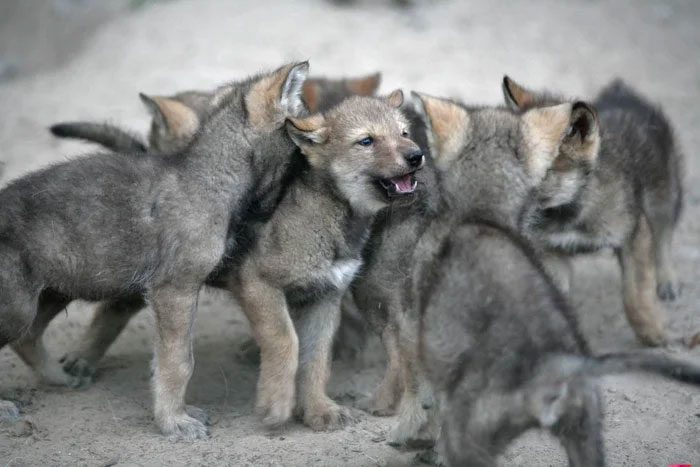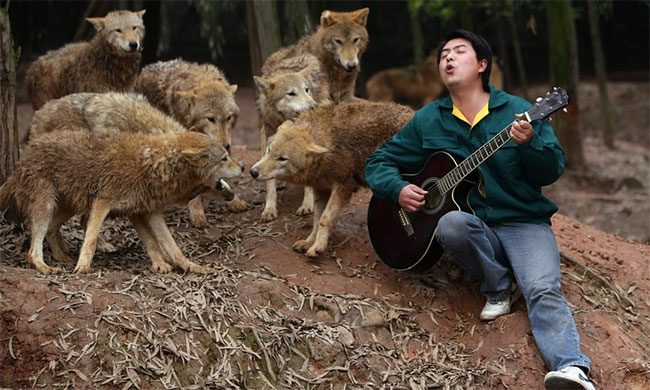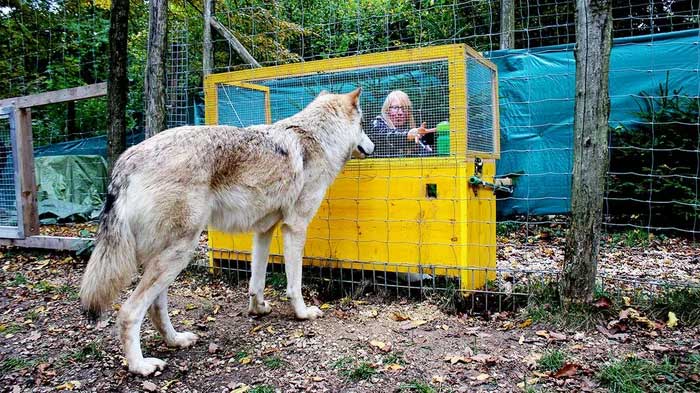Few animals exhibit affection and loyalty as much as dogs do. However, a new study provides evidence that the bond between humans and animals can also develop in wolves.
While previous studies have suggested something similar, there has not been much research on the bond between wolves and humans, and even those that exist have yielded very different results. In this study, the research team aimed to take a standardized approach where a test group of dogs and wolves were raised in identical conditions from birth.

Wolves can eat anything to survive, even long-dead animals. However, in good living conditions and during seasons with ample food, wolves can be quite selective. They typically prefer large ungulates such as deer and elk, and they only eat when the prey is still fresh. If they do not consume all the food they have caught, they will leave it without storing it. The common fur colors of wolves are white and gray, although there are a few individuals with very special black coats. In fact, this is not their natural color. A 2008 study from Stanford University revealed that a specific gene responsible for black fur color only appears in dogs, suggesting that black wolves are likely a result of breeding. The gene for black fur is dominant, so it is mostly passed on to offspring. Although black wolves do not exhibit exceptional hunting skills, they have a better immune system. Black wolves are mostly found in the frigid regions of North America.
Between 40,000 and 15,000 years ago, dogs were domesticated from a now-extinct species of wolf, and researchers believe their findings could shed light on traits that developed during domestication and those that were present from the start.
Christina Hansen Wheat, a therapist and the lead author of the study from Stockholm University in Sweden, stated: “Wolves that show attachment to human guidance may have a selective advantage in the early stages of dog domestication.”

In fact, wolves in North America are quite docile and less likely to attack humans compared to other regions; there are very few records of wolf attacks on people in the U.S. and Canada, while Europe and Asia present a different story. Historical records indicate that over 3,000 people were killed by wolf attacks in France between the 1600s and 1800s. Wolves in India and Russia are known for their cruelty and aggression. During World War I, Allied forces struggled against attacks from hungry wolf packs attracted by the scent of blood.
The study examined the reactions and behaviors of 12 Alaskan Huskies and 10 European gray wolves (Canis lupus) in a strange situation test, a standard scientific assessment initially used with children to evaluate their attachment to caregivers, which was adapted for dogs (and in this case, wolf dogs) 20 years ago.
Raised by trained caregivers from 10 days old to 23 weeks old, the dogs and wolves underwent an experiment lasting about 15 minutes.
In this experiment, the primary caregiver for the wolves, dogs, and a stranger took turns entering and exiting the room, interacting with the animals through active play and petting.
Like dogs, the wolves showed more affection and spent more time greeting familiar individuals, and they also had more physical contact. Familiar individuals were also more likely to be followed to the door when they left.

We often picture wolves as agile and quick, but some species can weigh up to nearly 100 kg. Tropical wolves typically have a body size comparable to medium-sized dogs. However, as you move north (Alaska, Canada, and Russia), their size increases. The largest wolf ever killed in North America (Alaska) in 1939 weighed nearly 90 kg. Typically, these are the alpha wolves, as they are always well-fed by other members of the pack.
Hansen Wheat remarked: “It is clear that wolves, like dogs, prefer familiar people over strangers.”
“But perhaps the more interesting point is that while dogs were not particularly affected by the testing situation, wolves were.”
Compared to dogs, wolves exhibited more stress-related and fearful behaviors when faced with strangers, including pacing, crouching, and tail tucking.
These behaviors coincided when a stranger entered the room and when both the stranger and the wolf were in the room without familiar individuals.
When a familiar person returned to the room, these behaviors became less pronounced. In other words, it seems that familiar individuals act as a kind of “social buffer” for the wolf.
Scientists continue to investigate the similarities and differences between dogs and wolves in an effort to understand their evolutionary history – but it appears that in their relationship with humans, there are some significant similarities. However, the differences suggest areas for further exploration in future research.





















































